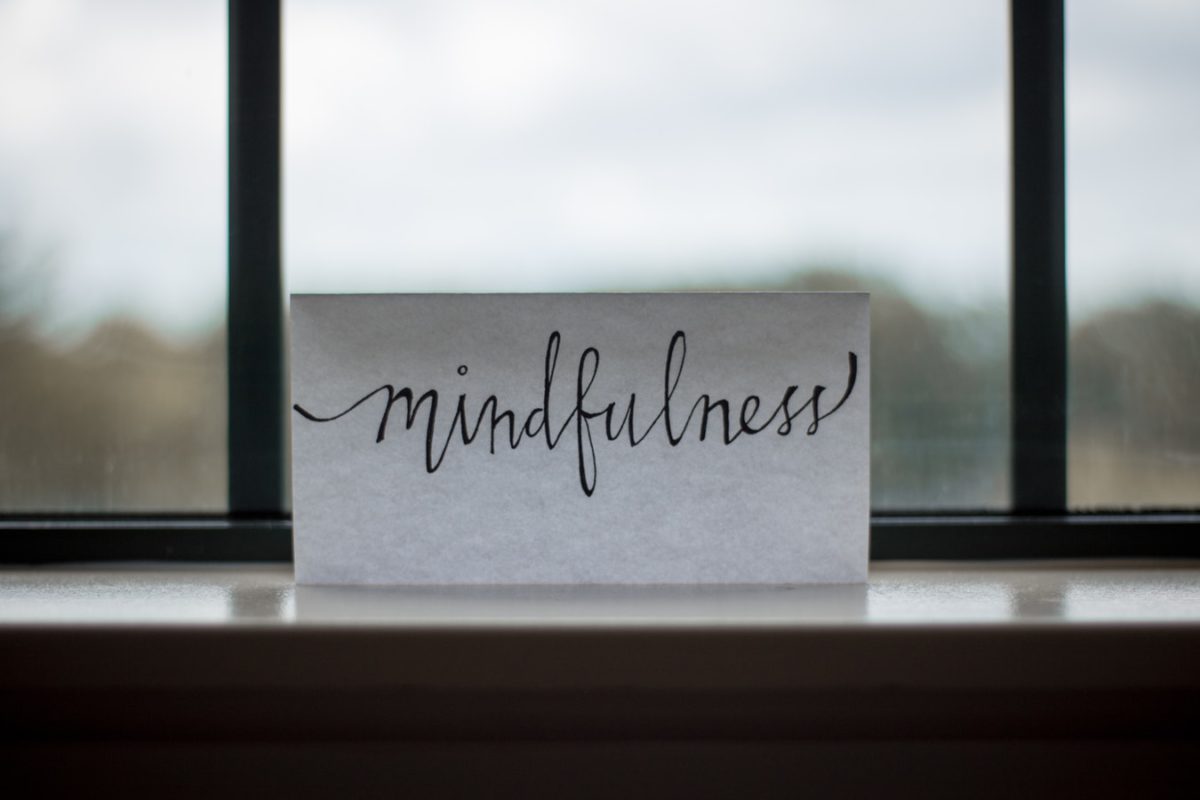
6 easy ways to practice mindfulness in the office
- November 11, 2018
- Marketing Team
Starting a new job is exciting, but it can also be quite stressful. While you are still learning the ropes it can feel like you have so much on your plate there’s little time to pause and reflect. But by narrowly focusing on all the items on your continually growing to-do list, it’s easy to end up feeling more erratic than accomplished.
Keep in mind that you are not alone. Starting a new job is a stressful experience for everyone, no matter what stage they are at in their career. However if every day feels like a struggle, making time for some moments of mindfulness might be good for you.
At first glance it might seem counter-intuitive. How can taking time to do nothing help when we’ve already got too much to do? It all comes down to balance. Sometimes you need to sit back and recharge in order to handle your next task effectively.
What is mindfulness?
Mindfulness is a simple but powerful way to improve your daily life. Mindfulness means paying attention to the present moment in a non-judgemental way. It’s becoming increasingly popular in response to our fast-paced modern world which calls for constant productivity and habitual multitasking. Mindfulness can help reduce stress, improve your focus and help with your performance at work.
Practising mindfulness in the office
There are plenty of things you can do to start working some mindfulness into your working day. It often helps to start small by focusing on fitting some form of mindfulness into your normal routine. This will turn mindfulness into a positive habit that doesn’t require much thought or effort to maintain.
Below are some simple and easy mindfulness practices you can use in the office. What works for one person might not work for another. So it’s best to experiment with these techniques and see which make most sense for you

One minute meditations
If work starts to feel overwhelming, take a minute time out. Sit comfortably in your chair and focus on the feeling of your breath coming in and going out. You don’t have to close your eyes if you feel uncomfortable doing that. But if you keep your eyes open, try not to move them around. Pick one spot in front of you and hold your gaze as you meditate. Studies show that just a few minutes of meditation a day counts more than you’d think.
Mindful listening
It’s easy for minds to wander during conversations. Instead of formulating your reply while your colleague is still talking, tune in and pay closer attention to what they’re saying. Try not to think about your to-do list, your plans for the evening or past conversations – give the conversation your undivided attention.
As well as helping you to pick up more information, this can also improve the quality of your workplace relationships. People like to feel that their voice is genuinely being heard.

Email meditation
If you inbox is constantly overflowing, then you might want to try this email meditation exercise devised by Cheung and zen master Thich Nhat Hahn in their book “Savor: Mindful Eating, Mindful Life.”
After writing an email, stop and take three deep breaths, focusing on each inhale and exhale. You can repeat to yourself, “Breathing in, I thank the power of the Internet. Breathing out, I am fully conscious of my current email actions.” Then, input your recipient and cc-recipient addresses, and click send on the email.
Not only are you helping yourself calm down, but you’ll also preventing yourself from making mistakes. It’s just a moment of pause and it doesn’t take long.
The observation game
Choose any object nearby (a pencil, your computer mouse or even your own hand) and really focus on it for one minute. Pretend you’re seeing it for the first time. Pay close attention to its shape, texture, and construction. This can help you clear your mind and reconnect with those everyday objects we so often take for granted.

Take a break in nature
This strategy is weather permitting (in the UK at least). When you go on a coffee or lunch break, take a stroll by yourself through a nearby park or green area. Leave your phone and any other electronic devices in the office and use this time to focus on the natural world around you.
To feel grounded, it helps to pay attention to the feeling of your feet against the ground with each step. This is a healthy exercise for both your mind and your body, as you’ll also benefit from the physical movement and fresh air.
Make gratitude lists
Humans have a “negativity bias.” Essentially, this means we’re much more likely to focus and dwell on something that’s gone wrong than on things that have gone well. Left unchecked, this leads people into an excessively negative and unbalanced way of thinking. Through mindfulness we can recognise the negativity bias for what it is and take steps to counter it.
Gratitude is the antidote to the negativity bias. Plenty of evidence suggests that actively practising gratitude makes you feel better and has a positive impact on your creativity, health, working relationships, and quality of work.
Everyone dislikes certain aspects of their work, and it can be very tempting to focus on these pain points almost exclusively. However, making time to list all the things that are going well at work can help improve resilience and shift you into a more positive frame of mind.
Here’s how to keep your morning mindful.
Author Bio: James Deeney is the lead content writer at Venturi Group, an IT recruitment agency. A Science Communication graduate, James aims to take the jargon out of technical and scientific writing.







